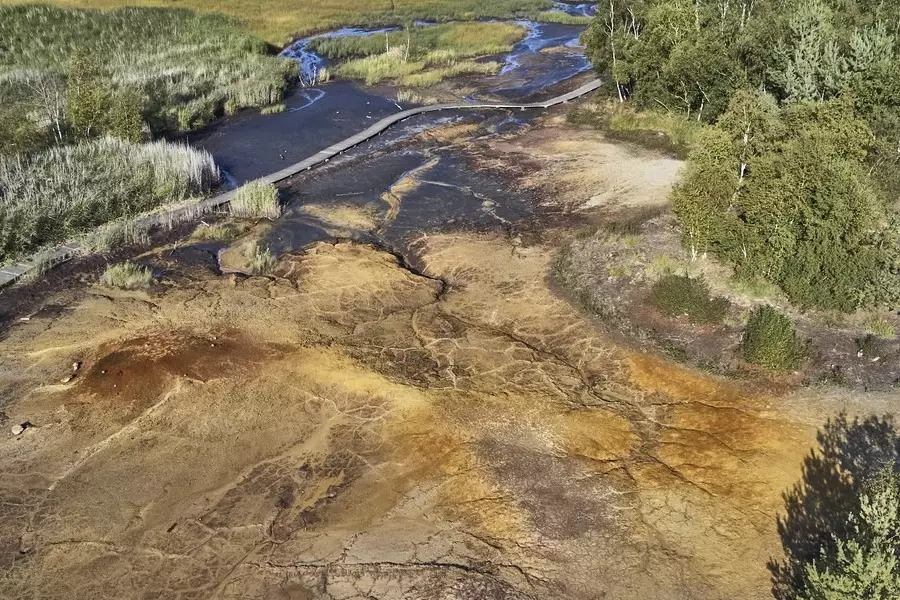SOOS educational trail
The shallow basin between Vonšovský and Sooský brooks (at Nový Drahov railway station 6 km north of Františkovy lázně) is divided into two parts by a mound of silica sand.

In the northern one, which drains into Sooské brook, a deep bog has formed. A shallow lake was formed in the southern part without a drain. It was fed not only by rainwater, but mainly by water from numerous mineral springs. Such conditions suited unicellular algae - diatoms. Diatoms form siliceous two-part boxes. They look like small boxes - they have a lid and a bottom. They live both in fresh waters and in the sea. During the year, they have two periods of development - in spring and autumn. Every year, two layers of a special sediment - diatomaceous earth - settle on the bottom. On Soos, a domed diatom shield with a thickness of several meters was created in the middle. The presence of marine diatoms, which cannot be found elsewhere in our country, is also interesting.
The lake has long since disappeared, but mineral springs and springs of carbon dioxide gas broke through the diatom shield and are still functioning today. The springs look like small craters up to 80 cm wide and a few tens of cm deep. Carbon dioxide gas hisses out of some (experts call such formations moffets), others form false mud volcanoes in which water and mud bubble up. During rains, they fill with water, during frosts, ice pyramids and columns form around them. The soil here is saturated with salts from mineral springs and when dry it is covered with crystals of white Glauber's salt, reddish colored iron oxides and yellowish and greenish crystals of various sulfates. The salt content is so high that practically no plants grow in some parts of the territory, only those that tolerate this environment in others. Some plants, on the other hand, need salty soil and can therefore only be found here. Two larger springs were caught on Soos and we can therefore taste them. The Imperial Spring in particular is excellent. Its well has been newly modified (previously, the water from the spring mixed with water from the surrounding bog and was harmful to health).
Soos is sometimes said to be a fragment of a preserved prehistoric Tertiary landscape. To a certain extent, this is true - from the Tertiary, we have more places where there are layers of diatomite, diatoms are also found in the Sokolovská basin in the layers above the upper layer. Volcanic activity was going on at that time and there were far more mineral springs and gas springs. However, many things were different - a warmer climate, a different relief of the landscape, a different river network.
Learning trail parameters
- start Nový Drahov - Kateřina at the railway station, end there
- length 2 km
- easy route adapted for the disabled
- 14 stops
- viewing time approx. 1 hour
- the trail is intended for pedestrians
- the trail is open from March 1 to November 15.
Transport
- new Drahov (train).
Tourist routes
- red brand from Františkové Lázně.
Parametry naučné stezky
- začátek Nový Drahov - Kateřina u železniční stanice, konec tamtéž
- délka 2 km
- lehká trasa bezbariérově upravená
- 14 zastávek
- doba prohlídly cca 1 hodina
- stezka je určena pro pěší
- stezka je otevřena od 1. 3. do 15. 11.
Doprava
- nový Drahov (vlak).
Turistické cesty
- červená značka z Františkových Lázní.

